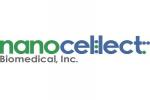With Benchtop Microfluidic Cell Sorting, NanoCellect is committed to empowering every scientist to make discoveries one cell at a time.
Accelerate to discover
Related topics

Image-activated cell sorting
The field of genomic research has undergone a remarkable transformation with the rapid expansion of high-quality genome databases, the discovery of epigenetic factors and the advent of CRISPR–Cas technology. However, a major challenge remains in linking these genetic and epigenetic perturbations to spatially resolved cellular phenotypes at scale.
Image-activated cell sorting (IACS) offers a way to address this challenge by enabling real-time image-based sorting of suspended objects (for example, single live cells, cell clusters or cells adhered to carriers) at high rates of over 1,000 events per second. Unlike fluorescence-activated cell sorting (FACS), which relies on one-dimensional fluorescence intensity profiles of cells, IACS leverages multi-dimensional optical imaging to capture the full complexity of cellular characteristics, enabling high-content sorting based on both visual and functional attributes.
A distinctive feature of IACS is its ability to integrate artificial intelligence for real-time image analysis, enabling sophisticated and precision decision-making in the sorting process. In this Review, we explore the principles, components and key performance indicators of IACS. We also highlight its unique applications across fields such as microbiology, immunology, cancer biology, food science and sustainability science, while addressing the challenges and future opportunities that lie ahead for IACS. Our goal is for this Review to serve as a comprehensive guide to IACS for beginners and experienced users alike, fostering its adoption and driving discoveries across biology and medicine.
Learn more about VERLO: https://omixys.pl/products/verlo-nanocellect/
NanoCellect’s VERLO is recognized in the article as a capable and accessible Image Activated Cell Sorting platform suited for intracellular content-, morphology- and fluorescence-based cell sorting. It is applicable across cell biology, immunology, oncology, microbiology, and synthetic biology for tasks such as:
- Morphology-based screens
- Intracellular localization studies
- Cell–cell interaction analysis
The paper highlights:
- Nine-color fluorescence imaging and three label-free imaging using 488 nm and 561 nm lasers.
- Gentle microfluidic cell sorting, using piezoelectric actuator-powered microfluidics, which differs from droplet-based mechanisms in other systems.
- A sorting rate of up to 200 events per second.
VERLO is presented as an accessible platform that integrates image-based morphology and molecular profiling.
Related technologies: Cell sortingSingle Cell OmicsSample preparation



